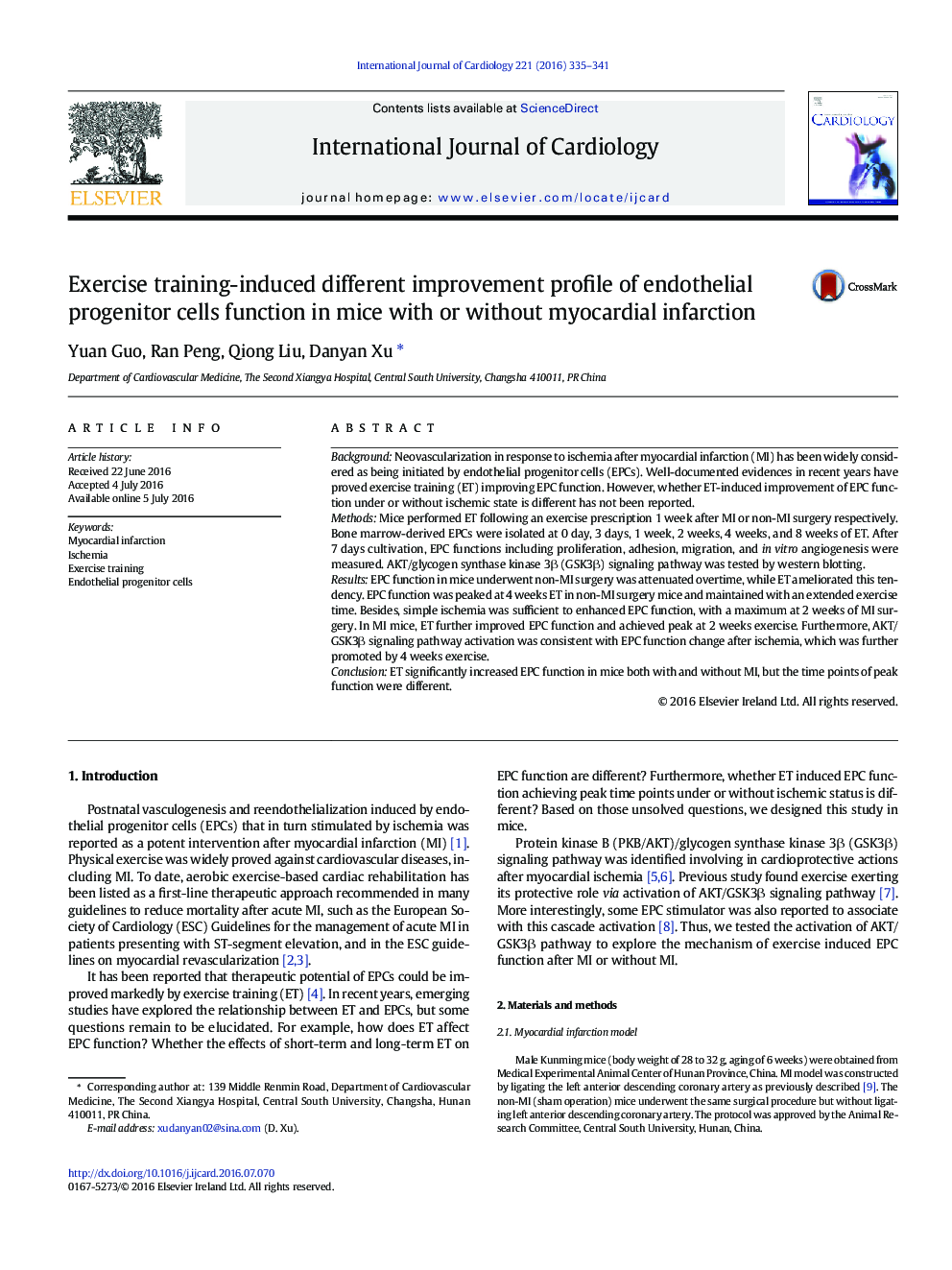| Article ID | Journal | Published Year | Pages | File Type |
|---|---|---|---|---|
| 5962970 | International Journal of Cardiology | 2016 | 7 Pages |
BackgroundNeovascularization in response to ischemia after myocardial infarction (MI) has been widely considered as being initiated by endothelial progenitor cells (EPCs). Well-documented evidences in recent years have proved exercise training (ET) improving EPC function. However, whether ET-induced improvement of EPC function under or without ischemic state is different has not been reported.MethodsMice performed ET following an exercise prescription 1 week after MI or non-MI surgery respectively. Bone marrow-derived EPCs were isolated at 0 day, 3 days, 1 week, 2 weeks, 4 weeks, and 8 weeks of ET. After 7 days cultivation, EPC functions including proliferation, adhesion, migration, and in vitro angiogenesis were measured. AKT/glycogen synthase kinase 3β (GSK3β) signaling pathway was tested by western blotting.ResultsEPC function in mice underwent non-MI surgery was attenuated overtime, while ET ameliorated this tendency. EPC function was peaked at 4 weeks ET in non-MI surgery mice and maintained with an extended exercise time. Besides, simple ischemia was sufficient to enhanced EPC function, with a maximum at 2 weeks of MI surgery. In MI mice, ET further improved EPC function and achieved peak at 2 weeks exercise. Furthermore, AKT/GSK3β signaling pathway activation was consistent with EPC function change after ischemia, which was further promoted by 4 weeks exercise.ConclusionET significantly increased EPC function in mice both with and without MI, but the time points of peak function were different.
